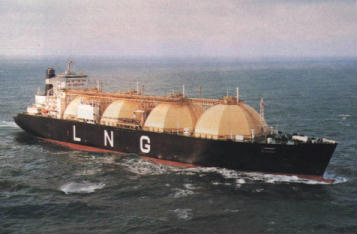
LNG
Liquefied natural gas, or LNG, is natural gas in a liquid form. When natural gas is cooled to minus 259 degrees Fahrenheit (minus 161 degrees Celsius), it becomes a clear, colorless, odorless liquid. LNG is neither corrosive nor toxic.
Chem-Energy Corporation has been actively involved in the study and development of LNG projects. The company has carried out the marketing and trading operation study in partnership with a major company in the Middle East and Central Asia. The CEO of the company Mr. Shuja Zaidi has been a speaker on LNG at various conferences focused on supply and marketing of LNG with its future in the coming years.
The LNG (liquefied natural gas) supply prospects to the U.S., particularly from the Asia-Pacific region and the Middle East is good. The gap between U.S. natural gas supply and demand is expected to grow in the coming years. LNG imports can help to close this gap. The study shows the Middle East and Asia Pacific LNG Supply Prospects to the U.S.’s Gulf Coast and East Coast are good. The study also shows that the LNG market in Asia and the USA is growing more rapidly than expected. Even though the demand in Asia and USA is growing, still there is competition between the suppliers who are the USA market. Shortage of Gas supply in California is forcing California to ease its policies to import LNG
LNG projects are among the most expensive energy projects. Accurate data on LNG plant costs are difficult to pinpoint since costs vary widely depending on location and whether a project is greenfield, i.e., built in a new location, or an expansion of an existing plant. According to our study on LNG projects, there are various main price components of an LNG project, from the gas field to the receiving terminal
Chem-Energy can assist as a consultant or on joint venture basis to develop the LNG projects in the USA and in the International markets. To learn more please send an E Mail to: info@chem-energy.com

LNG TANKERS
Liquefied Natural Gas [LNG] tank ships look different from regular tank ships carrying oil and chemicals. Most LNG tank ships have two hulls, so that, if a collision or grounding punctures the outer hull, the ship will still float and the LNG will not spill out. LNG tanks are either spherical (and the upper half of the sphere sticks out above the deck), or box-shaped. The ships tend to ride high in the water, even when loaded. A typical LNG ship is 950 feet long and 150 feet wide, and many new ships being built are even bigger.
WHAT IS LNG?
P. O. Box 4025.
Garden Grove. Ca 92842 USA